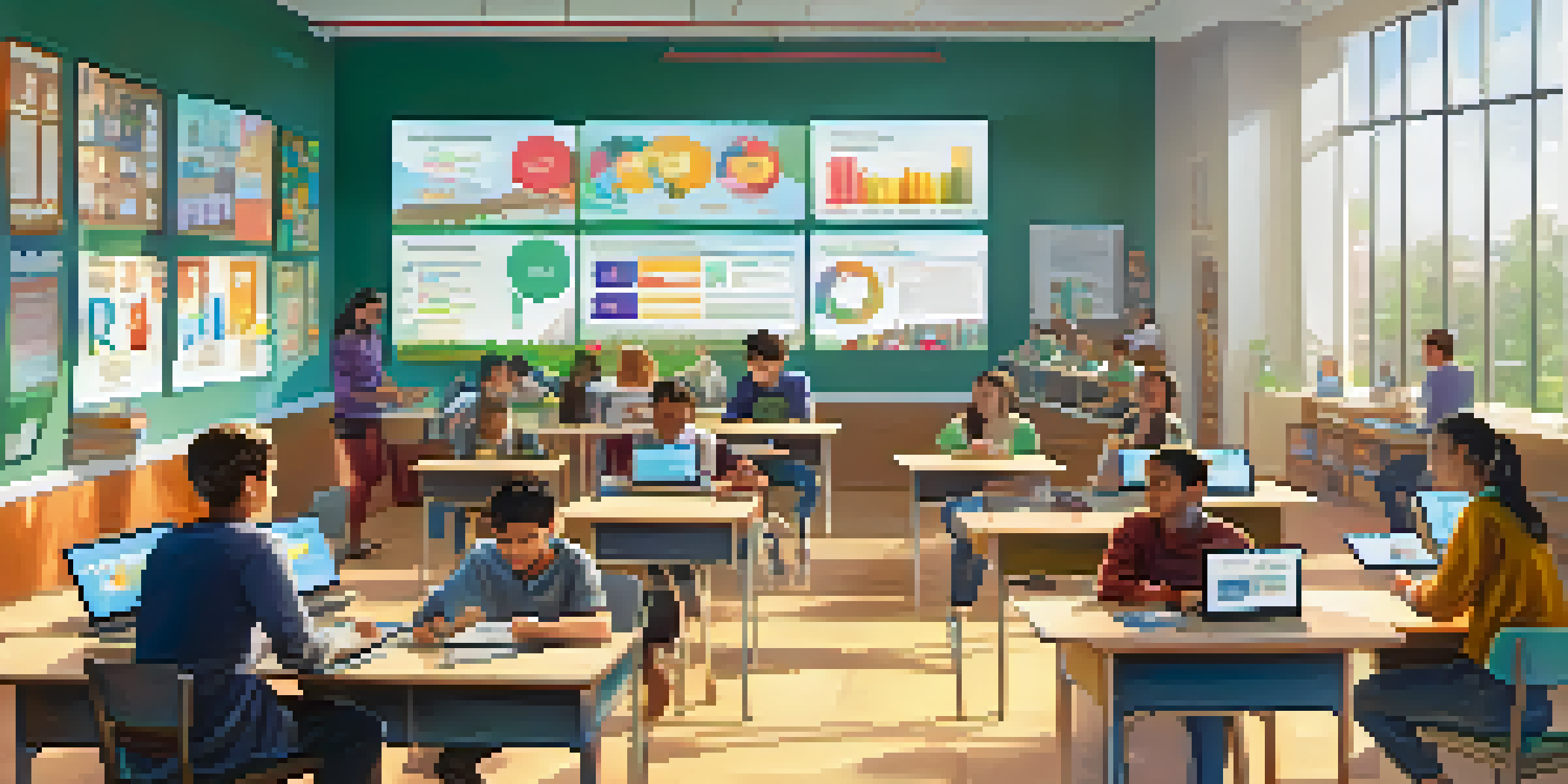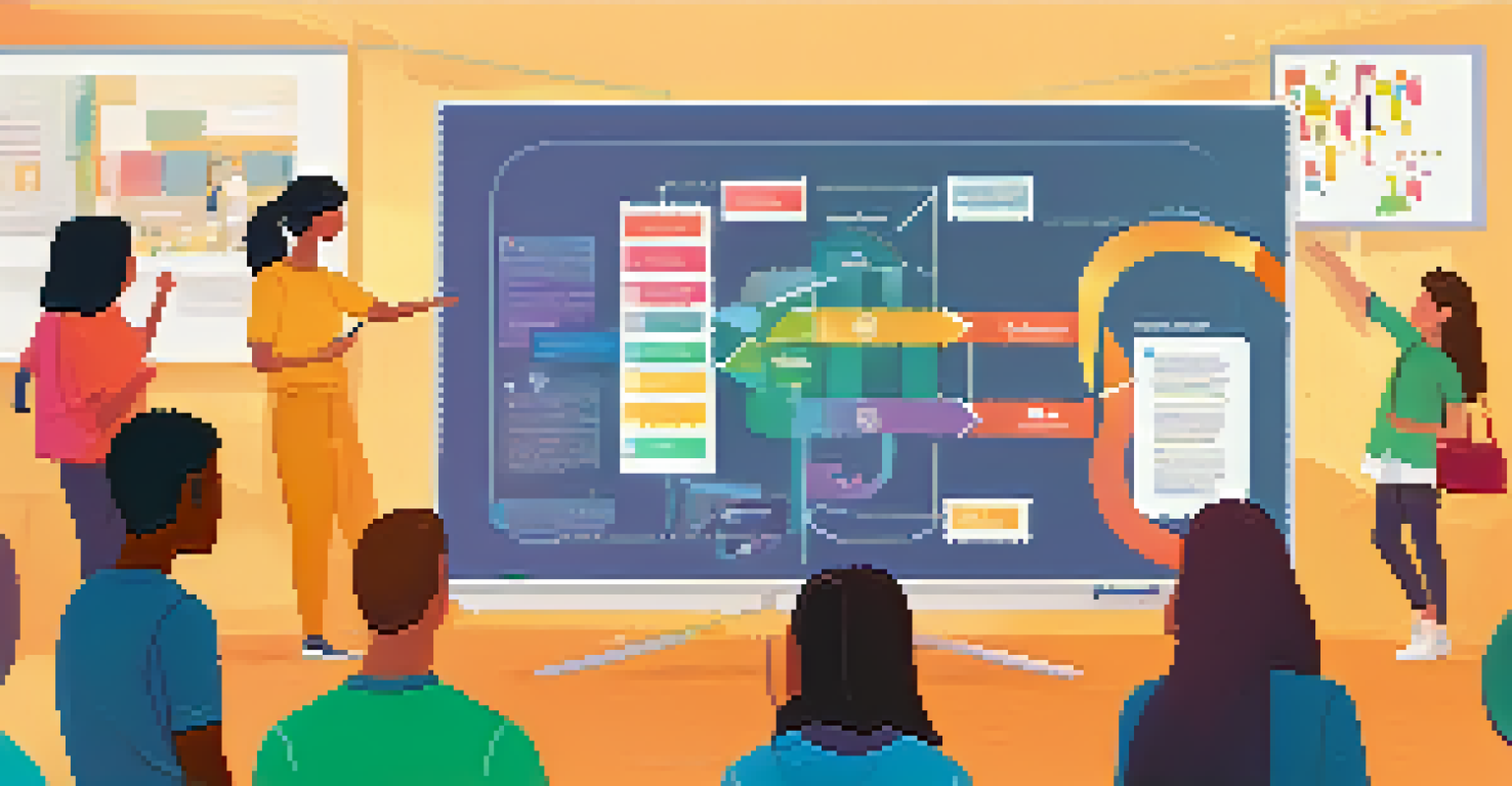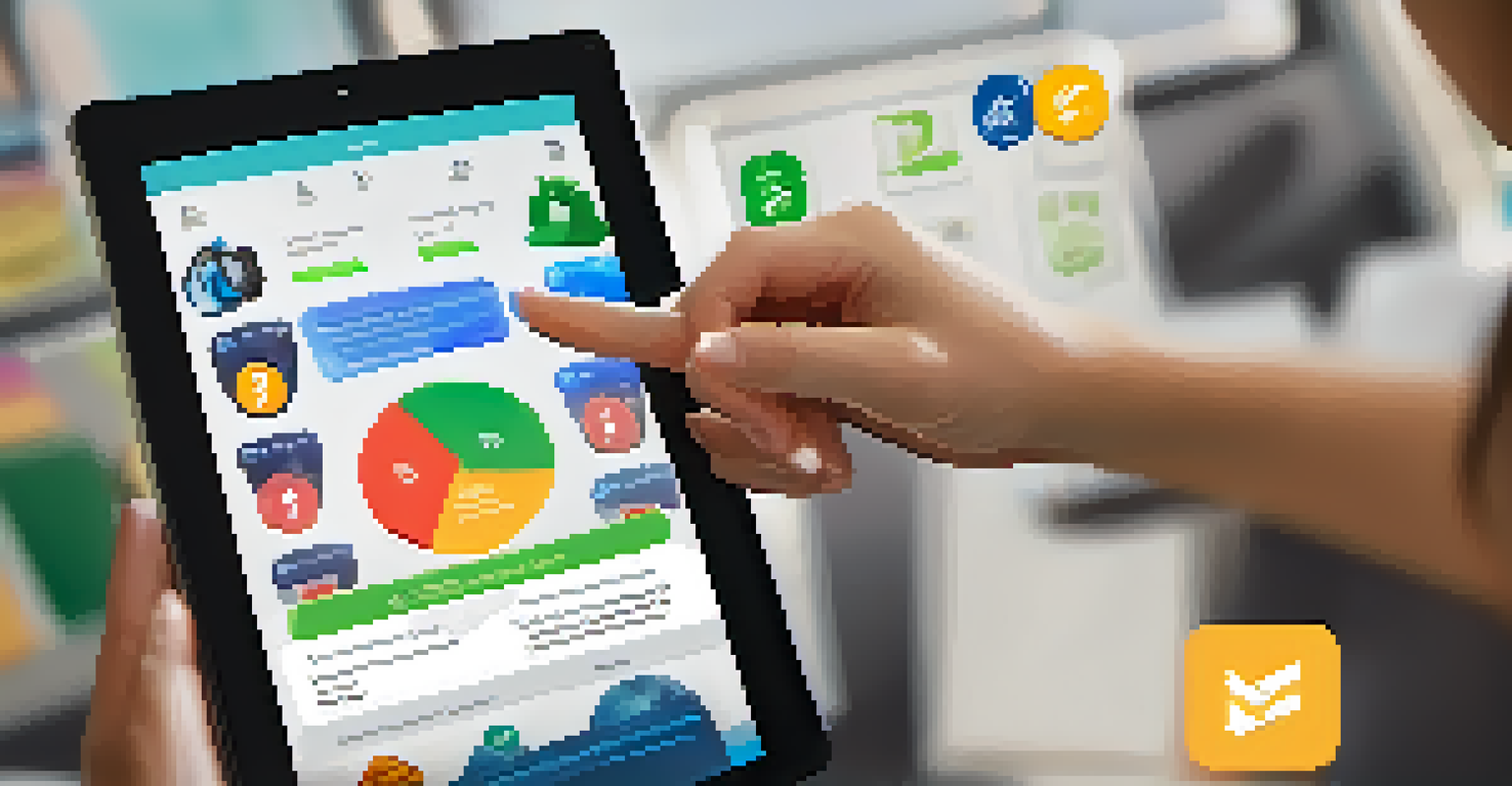How Feedback Loops Enhance Gamification in Learning Systems

Understanding Feedback Loops in Learning Environments
Feedback loops are crucial mechanisms that provide learners with information about their performance and progress. Essentially, they create a cycle of action and response, allowing learners to understand what they are doing well and where they can improve. By incorporating feedback loops into learning systems, educators can foster a more interactive and engaging experience that motivates students to keep progressing.
Feedback is the breakfast of champions.
For example, think of feedback loops like a video game’s scoring system. Just as players receive points for completing tasks, learners can receive feedback on their achievements, which encourages them to continue striving for better results. This instant acknowledgment not only builds confidence but also creates a clear pathway for improvement.
In gamified learning, these loops often involve immediate feedback, such as quizzes or interactive tasks that provide instant results. This immediacy keeps learners engaged and reinforces the connection between their efforts and outcomes, making the learning experience both rewarding and effective.
The Role of Gamification in Learning Systems
Gamification in learning refers to incorporating game-like elements, such as points, badges, and leaderboards, into educational contexts. This approach transforms traditional learning into a more dynamic and enjoyable experience, making it easier for learners to stay engaged. By adding a layer of fun and competition, educators can capture the attention of students who might otherwise be disinterested.

Consider the way fitness apps use gamification to motivate users. By allowing users to track their progress and earn rewards for milestones, these apps encourage continued participation and improvement. Similarly, educational platforms can leverage gamification to create a sense of achievement and community among learners.
Feedback Loops Enhance Learning
Feedback loops provide essential information about performance, motivating learners to improve continuously.
When feedback loops are integrated with gamification, the result is a powerful combination that enhances motivation and retention. Students are not only rewarded for their efforts but also receive constructive guidance that helps them navigate their learning journeys more effectively.
How Feedback Loops Boost Engagement in Gamified Learning
Engagement is key to successful learning, and feedback loops play a significant role in keeping learners invested in their progress. When students receive timely and constructive feedback, they feel more connected to their learning objectives. This connection nurtures a sense of ownership over their educational journey, making them more likely to participate actively.
The only real mistake is the one from which we learn nothing.
Imagine a classroom where students can instantly see their quiz scores and receive tailored suggestions for improvement. This immediate feedback not only fuels their motivation but also encourages them to embrace challenges rather than shy away from them. The result is a more vibrant and interactive learning atmosphere.
In gamified settings, feedback loops can take various forms, from digital badges that recognize achievements to peer evaluations that foster collaboration. By diversifying the types of feedback available, educators can cater to different learning preferences while enhancing overall engagement.
Creating a Positive Feedback Culture in Learning
Building a positive feedback culture is essential for maximizing the benefits of feedback loops in gamified learning. When students feel safe to share their thoughts and receive constructive criticism, they are more likely to engage openly with the material. This culture promotes a growth mindset, where learners view challenges as opportunities rather than obstacles.
For instance, consider how game developers often test their products through user feedback. This iterative process not only improves the game but also fosters a sense of community among players. Similarly, educators can create an environment where learners feel comfortable giving and receiving feedback, enhancing collaboration and mutual support.
Gamification Boosts Engagement
Integrating game-like elements into learning makes education more dynamic and helps maintain student interest.
By establishing this positive culture, feedback loops become more than just a tool for assessment; they evolve into a vital part of the learning experience. In this environment, students are encouraged to take risks and learn from their mistakes, ultimately leading to deeper understanding and mastery of the subject matter.
Feedback Loops and Personalized Learning Paths
Personalized learning paths are essential for addressing the diverse needs of students, and feedback loops make this customization possible. By collecting data on individual performance, educators can tailor learning experiences to suit each student’s strengths and weaknesses. This adaptability ensures that learners receive the right support at the right time, enhancing their overall experience.
Think of it like a GPS navigation system that adjusts your route based on real-time traffic conditions. Feedback loops provide educators with insights that allow them to redirect students’ learning paths as needed. This level of personalization not only keeps the material relevant but also promotes sustained engagement.
In gamified learning, personalized feedback can be delivered through adaptive quizzes or tailored challenges that match a student’s skill level. This approach not only empowers learners but also reinforces their commitment to achieving their educational goals.
The Impact of Continuous Feedback on Learning Outcomes
Continuous feedback is critical in enhancing learning outcomes, as it allows students to make adjustments in real time. Unlike traditional assessments, which may only provide feedback at the end of a unit or course, continuous feedback keeps learners informed about their progress throughout the learning process. This ongoing communication helps students stay on track and remain motivated.
For example, think of a musician practicing their instrument. Regular feedback from a teacher or through self-assessment allows the musician to refine their skills and address weaknesses immediately. In the same way, learners benefit from understanding their performance continuously, leading to better retention and mastery of concepts.
Personalized Learning Paths Matter
Feedback loops enable educators to customize learning experiences, addressing the unique strengths and weaknesses of each student.
In gamified systems, continuous feedback can be integrated into various elements, such as progress bars or levels that indicate mastery. This real-time feedback not only informs students about their current standing but also inspires them to push further and achieve their goals.
Challenges and Best Practices in Implementing Feedback Loops
While feedback loops offer numerous advantages in gamified learning, implementing them effectively comes with its own set of challenges. Educators must balance the frequency and quality of feedback to avoid overwhelming students with information. Striking the right balance ensures that feedback remains constructive and encourages rather than discourages learners.
For instance, imagine a student who receives too much feedback at once, leading to confusion and frustration. To prevent this, educators can prioritize feedback elements, focusing on the most impactful areas first. This strategic approach helps maintain clarity and promotes a more positive learning experience.

Best practices for implementing feedback loops include using clear, concise language, and ensuring that feedback is actionable. By providing specific guidance on how to improve, educators empower students to take charge of their learning journey while fostering a supportive environment.